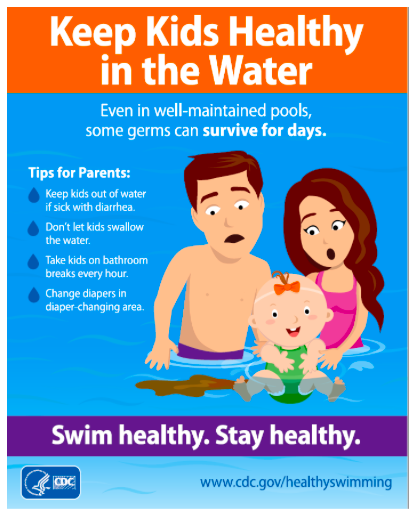In South Texas, spring break usually signifies the beginning of spring…or should I say summer. With the warmer temperatures already here, days at the pool are sure to follow.
As a new mom and a pool owner, I am both excited and terrified about my daughter’s pool experience.
On one side I am drawn to adorable swimsuits with flamingos and have visions of playful afternoons cruising the pool on inflatable rafts. On the other side, my worry kicks in and I begin to think about potential accidents and wonder if my pool is safe.

According to the Centers for Disease Control (CDC), drowning is a leading cause of death among kids aged one to fourteen years old. Before panicking and hanging up your flippers for good, know there are steps to help mitigate risk and have fun in the sun. Here are a few key prevention tips from the CDC to keep our little swimmers safe:
- Know the basics of swimming. Teach your kids the basics of floating and swimming. If they are not strong swimmers yet, be sure, those supervising can swim and are ready to assist.
- Know CPR. While we hope an emergency never occurs, it is best to be prepared. Know how to respond in even the worst of scenarios.
- Fence the pool off and keep up pool maintenance. A four-sided isolating fence with self-latching gates is recommended. Limit pool time to supervised fun only and keep kiddos from wandering to the pool unsupervised. Keep the pool in good repair, ensuring the drain covers are secure and the pool’s pH and chemical concentration levels are correct. Don’t forget to keep those pool chemicals out of reach.
- Use life jackets for weak swimmers and keep safety equipment available. There is no shame in the life jacket game. Use lifejackets to help new or non-proficient swimmers stay bobbing at the top of the pool. Also, keep safety equipment such as a rescue ring or pole available to assist even strong swimmers in need of help.
- Supervision is key. Even with protective measures in place, there is no substitute for supervision. Keep your eyes on your little fish at all times.
Related Reading: Traditional Swim Lessons to Infant Self-Rescue (ISR)
Besides physical safety, do not forget to take protective health measures. Individuals with diarrhea and individuals with open wounds not covered with a waterproof bandage should stay on the lounge chairs and out of the water. Most bacteria are killed quickly with pool disinfectants such as chlorine, but some can survive. Jaws may not be lurking in the depths of the pool, but germs can and kids tend to swallow water. Yuck!
If your merman or mermaid is still in diapers, swim diapers are not leakproof and should be checked and changed frequently. For those not in diapers, at least every hour, bathroom breaks should be taken regularly.
Lastly, slather on the sunscreen and be sure to stay hydrated. Be proactive about safety so you can enjoy your time in the water with you little one.
Now get out there and make a splash!
References:
Healthy Swimming/Recreational Water | Healthy Swimming | Healthy Water | CDC. (n.d.). Retrieved from https://www.cdc.gov/healthywater/swimming/index.html












